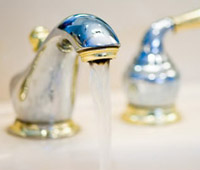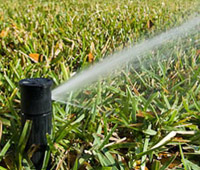https://www.etmoney.com/blog/9-steps-to-achieve-financial-freedom/
In this blog, we will explain what financial freedom truly means. More importantly, we will also look at the 9 steps that can help you achieve it.
What Is Financial Freedom?
As ironic as it may sound, financial freedom is about control i.e. control over your own finances. So, one of the better ways to define financial freedom is to have enough residual income that allows you to live the life you want, without any worries about how you will pay your bills or manage a sudden expense.
In other words, financial freedom is not always about being rich and having a lot of money. Instead, it is more about having control over your financial present and your financial future. To give you the context, there are 8 different levels of financial freedom. These levels range from someone not having to live paycheck to paycheck to having more money than what a person will need in his lifetime.
| 8 Levels Of Financial Freedom | ||
| Level | Description | Your Action |
| 1 | Not Living Paycheck to Paycheck | You have an emergency fund for contingencies |
| 2 | Enough Money to Quit your Job (for a bit) | Your savings can support a sabbatical or extended vacation |
| 3 | Financially Happy and Still Save | You are earning enough, doing things you enjoy & continue saving |
| 4 | Freedom of Time | You leave rat race to follow your interests & not going to be broke doing it |
| 5 | Enough for a Basic Retirement | You adjust or downsize some living standards to retire early |
| 6 | Enough to Actually Retire Well | You have accumulated enough assets and/or passive income streams |
| 7 | Enough for Dream Retirement | You experience the joys of traveling the world, spending time with friends etc. |
| 8 | More Money Than You Could Ever Spend | Your wealth outlives you i.e. you can’t spend enough in this lifetime |
One of the most interesting levels is the first level, where you are not living paycheck to paycheck. It is an interesting level because living under tight financial conditions need not be limited to the working poor. It can occur at all levels of income. Even a super-rich person might be earning and spending to the limits that he would be living under tight financial conditions. This is exactly why financial freedom is nothing but financial control.
Another noteworthy level is level 4 i.e. the freedom of time. It’s something many people aspire for. Freedom of time happens where your cash flows are sorted in a way that allows you to leave your job to follow your passion or spend more time with your family. But most importantly not going broke while doing so.
Level 5 is an interesting one and can be crudely expressed as the FIRE movement. FIRE is an abbreviation for Financial Independence, Retire Early, and is a lifestyle that is becoming popular in the West with people in their 20s and early 30s.
The concept of FIRE is around frugality with participants intentionally maximizing their savings rate by finding ways to increase their income or lowering their expenses. The idea is to save 50 to 75% of your income, which is then used to accumulate assets and helps in generating enough passive income to provide for retirement expenses.
You can pick your ideal level of financial freedom depending on your current situation and lifestyle. Your quest for financial freedom can be broken down into 9 essential steps. Some of these steps can be behaviors, tactical and strategic decisions. The more steps you can achieve, the faster shall be your journey on the path to financial freedom.
1. Understand Where You Are Presently
The first marker on the path to financial freedom starts with knowing where you are currently. This includes having a clear idea of how much debt you have, your accumulated savings, monthly expenses, your income, etc.
In other words, you need to know your personal financial statement with a fairly accurate knowledge of your income, expenses, assets, and liabilities. Once you have these numbers, you move to step 2 of your financial freedom journey which is writing your goals.
2. Pen Down Your Goals
Why do you need money? It could be to get rid of an education loan, trying to start a business, to travel, to plan weddings for your kids, for your retirement, and so on. As soon as you have enough money, these are the things that you want to fulfill.
Thus, money is simply a means to achieve your financial goals. But until you write down your goals, your money will be without a purpose and you will not know how to make the best use of it. So take a piece of paper and write down your top 5 goals that you would like to achieve over the next 1, 5, 10, and 20 years.
Also, ensure that while you are writing the goals, you are identifying SMART goals. It means goals that are specific, measurable, achievable, realistic and time-bound. For instance, a plan to accumulate Rs. 10 crore by 2050 to fund your retirement is an example of a SMART goal, because it is specific, measurable, achievable, realistic, and time-bound.
3. Track Your Spending
The next important step toward financial freedom is tracking your spending. You can do this in many ways like using a notebook or perhaps using an excel spreadsheet. You can also use the money tracker facility available on the ETMONEY app, which is an easy and effective way to track your spending. The app automatically tracks your expenses and categorizes them in terms of travel, shopping, eating out, etc.
This tracking of expenses is an important step towards financial freedom as it makes you more accountable. And also reveals many needless expenditures that you make merely on account of an impulse buy. If anything, an impulse buy is about losing control and works as an obstacle in your path to financial freedom.
Thus, it is important that you stay in control by religiously tracking your spending.
4. Pay Yourself First
“Pay Yourself First” means putting a specific amount of money in your savings or investment account before paying for anything else like bills, discretionary expenses, rent, etc.
This one act of paying yourself first has helped many people come closer to financial freedom. And the reason why this works is that it forces us to explore alternatives to limit your expenses.
For instance, if what remains as allowable expenses is not enough for you then you would be forced to take some additional action. This can be reducing your current expenses by making small tweaks in your lifestyle or can also mean picking up a side hustle in order to supplement your current income. Either way, by paying yourself first, you guarantee that you are always putting money aside to invest in yourself and your financial future.
5. Spend Less
Money saved is money earned. But it’s not an equal equation wherein Rs. 1 saved is Rs. 1 earned. Because when you invest that Rs. 1 rupee, you end up earning a lot more.
Now, spending less does not mean compromising on your existing lifestyle or living a barebones life. Financial freedom is more about smart spending which can be done in many creative ways. Some of the common techniques include learning to make delicious food at home thereby reducing your eating out expenses. Setting up auto-debits so that you don’t pay late fees on your credit cards.
The mere postponement of a non-essential item by a couple of days can go a long way in reducing impulse purchases, which then moves you closer to financial freedom.
6. Pay Off Your Debt
Paying off a big debt supports financial freedom in more ways than one. After all, you have more future cash flow to work with. Your credit rating is strong. And most importantly, closing a loan lifts a massive weight off your shoulders.
There are two main methods of paying off debt. The first one is the snowball method where you pay off the smallest debt first. So basically get one tick mark in your checklist and then move on to the bigger debts. And the second method of paying off debt is the avalanche approach where you first pay off the debt with the highest interest rate and then move to the lower ones.
Both these methods work efficiently and if you have a pile of debt, you need to decide what works best for you. But there is no hiding the fact that getting rid of debt is one of the most crucial factors to achieving financial freedom.
7. Always Keep Your Career Moving Forward
Increasing your income – while keeping the spending levels constant or in check – is one of the fastest ways to reach financial freedom. This requires you to continuously work on advancing your career or your business.
For instance, your career and therefore your income can go on the ascendency faster with you learning new and valuable skills and increasing your value to your employer. If you are self-employed, it means working on growth strategies to keep your business moving to the next level.
So if you have been leaving your career progress to chance, then probably now is a good time to take stock of how to accelerate the process. This in turn will increase your income levels and take you closer to financial freedom.
8. Create Additional Sources Of Income
For the majority of people who are serious about financial freedom, a 9 to 5 job may not be sufficient. In other words, you might need to look beyond a job for building income. In fact, some financial experts encourage people to discover as many as five streams of income. So if you have a 9 to 5 job, then congratulations – you have one stream of income. Now, you have to identify four more!
Additional income can come in 2 ways. The first approach is active income i.e you trade time for money. And the other approach to building an additional income is to do it passively, where you do the work once and money keeps coming in an automated manner.
If you take the first approach i.e. trade your time for money then you are limited by the hours in a day, which cannot go over 24 hours in any circumstance. However, active income is very quick to implement. And it can get you started in no time with side jobs like becoming a freelance writer, driving an Uber, designing logos on Fiverr.com, etc.
On the passive income front, the typical activities that generate money for you will include selling digital content like e-books and courses, becoming an affiliate marketer, investing in stocks, etc.
So, see what works best for you and take those small steps towards starting a second income.
9. Invest
The ninth and most future-looking step to attaining financial freedom is investing.
The first move is to invest as much as you can and as early as possible, therefore allowing the power of compounding to assist you. Next, increase investments each year at a percentage higher than your increase in income.
Another key thing to do is achieve an asset allocation of 50-60% in equities as quickly as possible. As a thumb rule, keep a 60-40 allocation between equity and non-equity assets. But feel free to change that ratio depending on your risk tolerance.
The next actionable step is to set up your investments in an automated mode using SIPs and don’t worry about timing the market. And finally, review your portfolio once a year, and don’t forget to rebalance your portfolio.
Bottom Line
These nine steps listed in this blog have different degrees of complexity and you might see some tasks come very naturally to you while others might require a lot more work. For instance, a number of people find tracking expenses, spending less, and investing a lot easier than, say, creating an additional source of income.
The more steps you can achieve, the faster shall be your journey on the path to financial freedom. It is a decision that you will need to make on the basis of what works best for you.
 1. Check your toilet for leaks.
1. Check your toilet for leaks.  7. Turn off the water while brushing your teeth
7. Turn off the water while brushing your teeth 12. Don't let the faucet run while you clean vegetables
12. Don't let the faucet run while you clean vegetables 16. Water your lawn only when it needs it
16. Water your lawn only when it needs it


